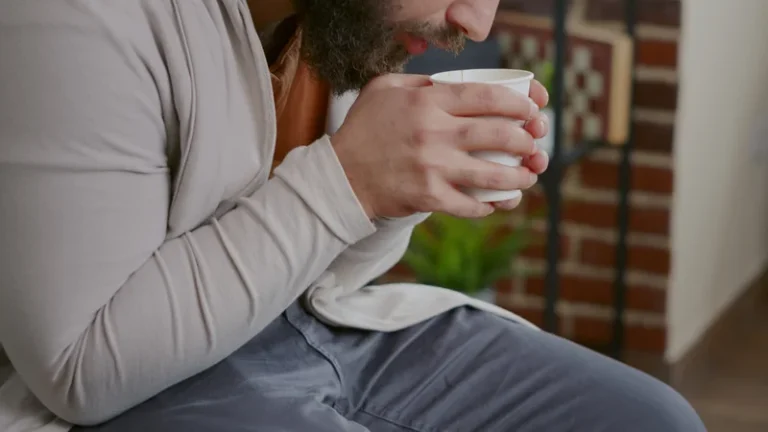
If you believe someone is significantly intoxicated, the first thing to do is to remove any additional alcohol from their immediate surroundings so they can’t continue to drink. The person is more confident, friendly, impulsive, and has a shorter attention span. This person may or may not be legally intoxicated at this point. If you are concerned about someone with these symptoms, you should seek immediate medical attention.
Stage 4: Confusion
Difficulties with motor functioning and coordination become significantly more prominent at this stage. People could begin behaving with less restraint, and judgment may be impaired. Alternatively, individuals may begin to feel excited or drowsy, have issues seeing clearly, or have minor memory lapses. For some, it can be something as benign as sending a message to an ex.

Stage 7: Death
One drink will typically result in a BAC beneath this threshold for both men and women. For example, withdrawal can occur during hospitalization (for example, for elective surgery) because drinkers are unable to obtain alcohol. If you think it’s a case of extreme alcohol intoxication, call 911 immediately. If your loved one is still conscious, see if you can get him to lie down on his side or drink a little water. If your friend has lost consciousness, it’s necessary to get her onto her side to prevent her from potentially choking on vomit, which can lead to death. Kelly brings empathy to an underserved population and her clients share that they feel listened to without judgement.

Understand the Risks of Alcohol Abuse
Death can occur at lower BAC levels, but the risk is significant at this level of intoxication. If you need help to quit or limit your drinking, the Department of Defense provides screenings to help identify what type of support you need and what treatment would work best for you. They offer inpatient, partial inpatient and outpatient treatment options. Men tend to reach this range after having 3 to 5 drinks in one hour, while women tend to reach it after having 2 to 4 drinks in one hour. Most women reach this range after having 1 to 2 drinks in one hour, while most men reach it after having 2 to 3 drinks in one hour. Here’s what you should know about BAC and the stages of alcohol intoxication.
- Moving Mountains takes a whole-person approach to recovery by offering a continuum of care, clinically proven treatments, and holistic healing.
- Thirty Americans die every day due to alcohol-related traffic accidents.
- Even with treatment, alcohol poisoning can lead to brain damage or other long-term complications.
- These stages progress based on Blood Alcohol Content (BAC), so people progress through them as they have more to drink.
- Those around the person will likely notice that they are visibly drunk.
- They are peer-led organizations dedicated to helping each other remain sober.
It’s essential to be aware of these stages, as they can help gauge how intoxicated you or someone else may be. Drunkenness is an umbrella term encompassing physical and psychological symptoms attributed to alcohol consumption within a period. When the speed at which alcohol is metabolized is faster than what the human body can consume, an individual develops drunkenness. Of course, long-term rehabilitation for alcoholism is the ultimate goal.
Different Stages of Alcohol Intoxication
Services are provided CONUS and OCONUS via call-in, live chat and text on their website and mobile app. You will have trouble walking and may even be unable to stand up. Sobriety occurs when you have a BAC between 0.01 and 0.05 percent. It usually means you have had 1 drink or less in the past hour. Outpatient treatment is less intensive than inpatient or partial hospitalization programs. Some services provide food and transportation, but services vary by program.
When is Alcohol Intoxication a Sign of Alcoholism?

What makes Casa Palmera distinct from other treatment facilities is our desire to not only heal stages of alcohol intoxication the body, but also aiming to heal the mind and spirit. For severe cases of alcohol intoxication, your loved one may be kept in the hospital for observation. Even after being released, his body will still need to recover from the incident—it may affect mood, appetite, and brain function.

Support

These effects typically start to occur when alcohol reaches a certain percentage of a person’s bloodstream, known as their blood alcohol content (BAC). Needless to say, the individual’s life is in danger at this stage. When a person has consumed quite a few alcoholic drinks, the effects of the alcoholic stupor stage will become stronger. Individuals might have exaggerated euphoric episodes, and their equilibrium may be lacking. This might be the stage during which they experience massive confusion or even blackouts.
The Stages of Drunkenness
- We base differences on several things, like genetics, body weight, frequency of intoxication, overall general health, and more.
- Their emotions are heightened, which could lead to unpredictable, aggressive or violent behavior.
- The ability to spot these signs can help you prevent overserving — and can help you avoid potentially harmful, and even fatal, situations.
- It is a temporary condition that comes with both physical and behavioral changes.
We offer treatment for chemical dependencies such as cocaine addiction, drug addiction and alcoholism. It is extremely important to us that you receive the highest quality medical care from our qualified staff during your stay. Kelly is a board certified Psychiatric-Mental Health Nurse Practitioner who earned her Master of Science degree in Nursing with a concentration in mental health at Fairleigh Dickinson University.
It can also involve the use of breath or blood tests to measure alcohol levels in the body. A doctor can diagnose intoxication by checking the patient’s blood alcohol content levels. Behavioral Signs When a person reaches the Intoxication Stage, their level of alertness has decreased. Their movements may Sober living house be slow, uncoordinated and unbalanced, and their reaction time has slowed down.
